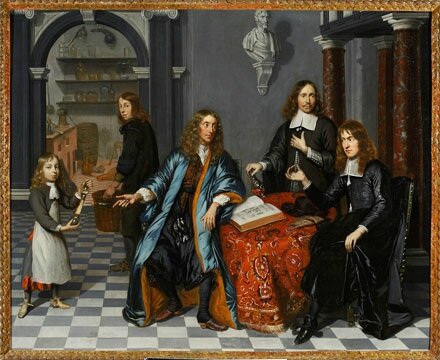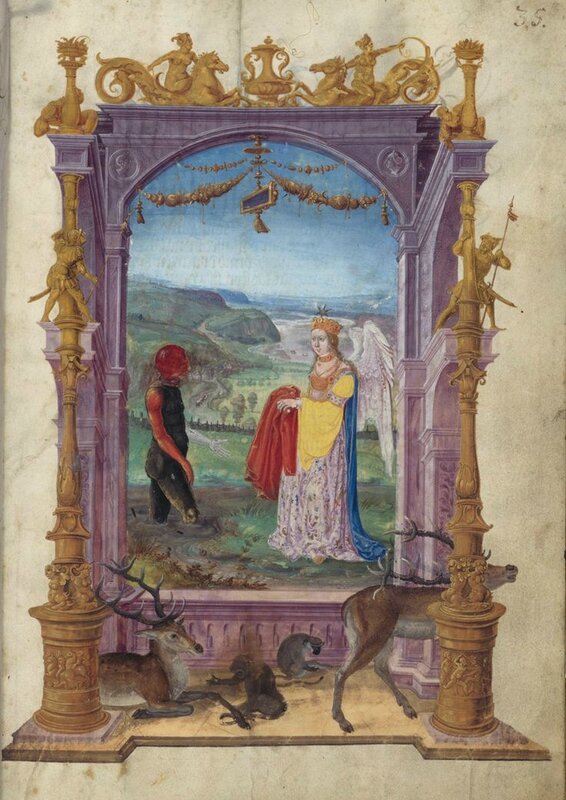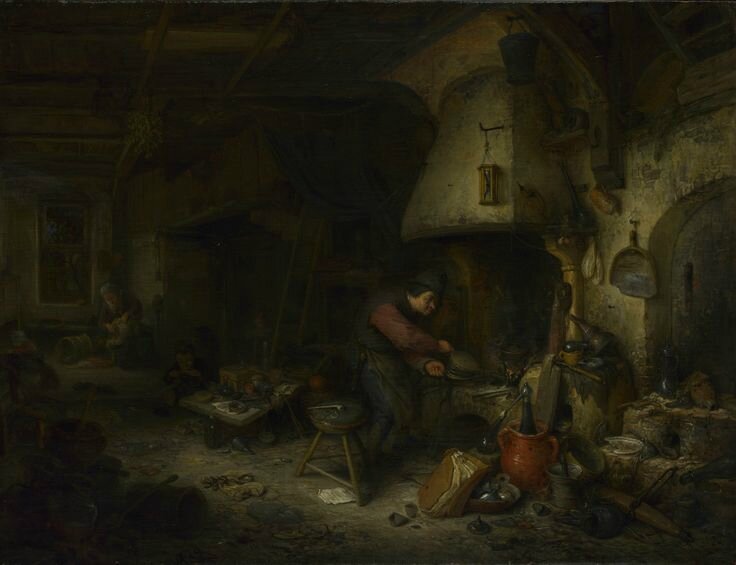"Art and Alchemy: The Mystery of Transformation" at the Museum Kunstpalast
François-Marius Granet, Der Alchemist, 1. Hälfte 19. Jh., Öl auf Leinwand, 61 x 48,3 cm, Chemical Heritage Foundation, Gift of Roy Eddleman, © Gift of Roy Eddleman, Chemical Heritage Foundation, Philadelphia / Foto: Will Brown
DUSSELDORF.- For the first time in Germany, an exhibition spanning all epochs and genres will be introducing the exciting link between art and alchemy in past and present times. 250 works from antiquity to the present, encompassing Baroque art, Surrealism, through to contemporary art from collections and museums in the USA, Great Britain, France, Mexico and Israel reveal the fascination which alchemy exerted for many visual artists. Artists featured in the exhibition, such as Joseph Beuys, Jan Brueghel the Elder, Lucas Cranach the Elder, Max Ernst, Hendrick Goltzius, Rebecca Horn, Anish Kapoor, Yves Klein, Sigmar Polke, Rembrandt van Rijn, Peter Paul Rubens and David Teniers the Younger invite visitors to explore the mystery of transformation.
Alchemy was invariably practised in secret, but was by no means a rare occurrence until well into the 18th century: Eminent personalities, including Paracelsus, Isaac Newton and Johann Wolfgang von Goethe, were alchemists, too. It was not until the Age of the Enlightenment that alchemy was ousted and became intermingled with occultism, sorcery and superstition. In connection with 19th and early 20th-century psychoanalysis alchemy was brought to new life.
The exhibition is divided into two major periods: pre-Enlightenment art, in particular works from the 16th and 17th centuriesand the art of the 20th and 21st centuries.
In the pre-Enlightenment era both artists and alchemists laid claim to the ability to not only imitate nature but to even perfect it. This ambition is illustrated in the exhibition by casts from nature made by Bernard Palissy and Wenzel Jamnitzer. Their lizards and other creatures are extraordinarily life-like and yet have been immortalized in precious metal or ceramic as if petrified. The circumstance that artists and alchemists were ultimately rivals is exemplified by the Dutch artist Adriaen van Ostade with his painting depicting an alchemist in his laboratory, having failed to produce gold.
By contrast, the exhibition also includes works by artists presenting alchemy in a favourable light, such as portraits by Rubens and David Teniers the Younger, allegorical paintings by Jan Brueghel the Elder and Hendrick Goltzius, as well as three copies of the “Splendor Solis”, the most richly illuminated manuscript in the history of alchemy. Furthermore, an original manuscript by physicist Isaac Newton, contributed by the Chemical Heritage Foundation in Philadelphia, will be presented here for the first time in Europe.
The modern section of the show begins with Surrealism. Max Ernst, for instance, repeatedly took up the theme of the “Chymical Wedding” in his work. A particular highlight is the painting “The Creation of the Birds”, a key work by the Surrealist artist Remedios Varo. The Androgyne is an important theme, for instance, in the exhibits by Rebecca Horn. Joseph Beuys will be represented by a number of sculptures, drawings and collages, as well as a film and photo documentation of his action at the 1982 documenta. Moreover, the exhibition includes works by Anish Kapoor displaying his characteristic use of intensely coloured pigments. Further exhibits include selected works by representatives of contemporary art, such as Anselm Kiefer, Yves Klein, Alicja Kwade, Sigmar Polke, Neo Rauch and Gerda Steiner and Jörg Lenzlinger.
The exhibition was conceived by Museum Kunstpalast in cooperation with the research group “ Art and Knowledge in Pre-Modern Europe” at the Max Planck Institute for the History of Science in Berlin, as well as a group of experts at the Chemical Heritage Foundation in Philadelphia, which also provided many pieces on loan. A Wunderkammer of curious and exotic treasures from flora and fauna is offered for visitors to explore. In an extensive accompanying programme the subject of art and alchemy will be expanded upon by means of lectures, talks and guided tours. For the exhibition, a studio for children was set up, where the theme of “The Alchemy of Colour” is explored by taking a close look at colours, along with their archetypical elements and production.
The exhibition, which is supported by METRO GROUP, is presented as part of the festival of fine arts Quadriennale Düsseldorf 2014.
Cornelis Willemsz de Man, "Delfter Apotheke„ In de Spiegel“, um 1670, oil on canvas, 90 × 112 cm (35.4 × 44.1 in). National Museum in Warsaw.
Jörg Breu, Splendor Solis or sun shine (fol. 16: swamp man and angels) to 1531/32.
Rembrandt Harmenszoon van Rijn, 1651-1653, Sogenannter fist to Stiftung. Museum Kunst Palast, Dusseldorf, collection of the Academy of Fine Arts (NRW). Photo: Horst Kolberg, Neuss.
Theodor Galle after Jan van der Straet (Stradanus), Destillierlabor (from the series "Nova reperta"), ca 1589-ca. 1593 Stiftung Museum Kunst Palast, Dusseldorf. Photo: Horst Kolberg, Neuss.
David Teniers the Younger, Alchemist in his workshop, 1650 Courtesy of Roy Eddleman, Chemical Heritage Foundation Collections. Photo: Will Brown.
Adriaen van Ostade, The Alchemist, 1661 The National Gallery, London, Bought 1871 © The National Gallery, London, 2013.
Rebecca Horn, Zen of Ara, 2011 springs, motor, brass, electronic device, D: 73 cm © VG Bild-Kunst, Bonn 2014 Private collection, Photo: Karin Weyrich, © Rebecca Horn

/https%3A%2F%2Fprofilepics.canalblog.com%2Fprofilepics%2F1%2F0%2F100183.jpg)
/https%3A%2F%2Fstorage.canalblog.com%2F03%2F02%2F119589%2F96711876_o.jpg)
/https%3A%2F%2Fstorage.canalblog.com%2F11%2F31%2F119589%2F94773502_o.jpg)
/https%3A%2F%2Fstorage.canalblog.com%2F20%2F83%2F119589%2F94772815_o.jpg)
/https%3A%2F%2Fstorage.canalblog.com%2F26%2F72%2F119589%2F75604929_o.jpg)
/https%3A%2F%2Fstorage.canalblog.com%2F59%2F60%2F119589%2F26458628_o.jpg)










/http%3A%2F%2Fstorage.canalblog.com%2F89%2F40%2F119589%2F129653656_o.jpg)
/http%3A%2F%2Fstorage.canalblog.com%2F51%2F77%2F119589%2F111391381_o.jpg)
/http%3A%2F%2Fstorage.canalblog.com%2F20%2F00%2F119589%2F110800921_o.jpg)
/http%3A%2F%2Fstorage.canalblog.com%2F47%2F70%2F119589%2F92628116_o.jpg)